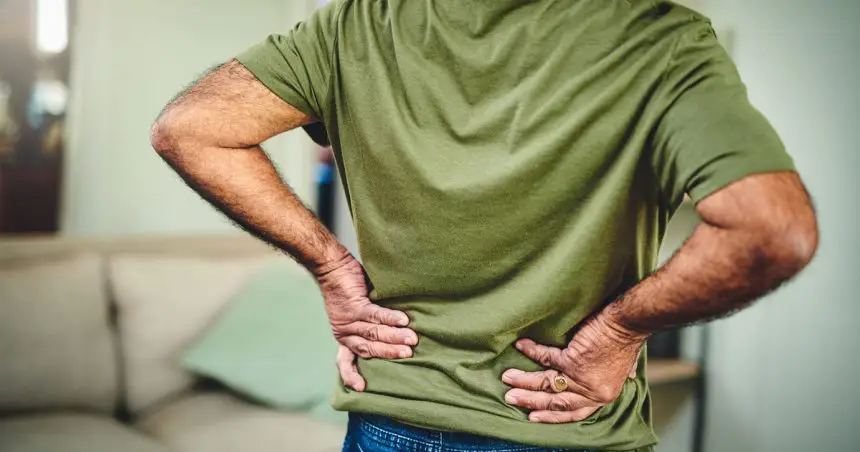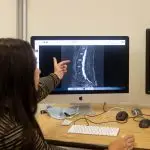Again ache is likely one of the most prevalent medical situations worldwide, impacting hundreds of thousands of People and sometimes proscribing their each day actions. The Well being Coverage Institute reviews that roughly 16 million U.S. adults expertise continual again ache, outlined as ache persisting for greater than three months.
Again ache, whether or not it seems all of the sudden or develops step by step, can tremendously have an effect on an grownup’s high quality of life. It could restrict mobility and bodily perform, pressure emotional and psychological well being, create dependence on ache medicines, and in the end scale back general well-being.
Backbone professional Skulpan Asavasopon, PT, PhD, from Loma Linda College Well being, emphasizes the significance of wanting past the continual label and understanding the underlying causes for persistent again ache.
“The true query is why doesn’t the ache go away?” Asavasopon says. “We have to diagnose the foundation causes and mechanisms of ache to stop it from recurring.”
Although again ache can occur to anybody, Asavasopon shares insights on the significance of fine backbone well being and provides sensible steps to assist ease persistent again ache and maintain it from returning.
The significance of backbone well being
With so many adults experiencing again ache of their lifetime, Asavasopon highlights three key the reason why backbone well being is important:
Financial Affect: Again ache results in excessive healthcare prices, misplaced workdays, and incapacity, making it a major monetary burden on people and society.
Silent Struggling: Persistent low again ache is a number one reason for incapacity and staff’ compensation claims, with many experiencing recurring, persistent ache. This causes struggling and impairs cognitive perform, affecting general readability and efficiency.
Defining a wholesome backbone
All spines naturally age, however what issues most is how effectively they perform relative to that age. A wholesome backbone helps regular actions, adapts to each day actions with out vital ache, and ages naturally with out irregular put on or deterioration. For instance, X-rays of a 90-year-old’s backbone could present degenerative modifications, however it’s nonetheless thought-about wholesome if it capabilities appropriately for its age. Conversely, if a 20-year-old’s backbone exhibits comparable degeneration, it’s a transparent signal of an unhealthy backbone.
A wholesome backbone is not only about excellent construction; it’s additionally about mindset, explains Asavasopon. Accepting the pure ageing course of as a standard a part of life can considerably scale back struggling. Asavasopon notes {that a} 90-year-old who accepts their backbone’s regular ageing experiences much less ache than somebody who perceives their backbone’s ageing as an issue.
This mindset shift is important as a result of it reframes the narrative round backbone well being, emphasizing that structural modifications don’t essentially equate to dysfunction. A constructive outlook can tremendously influence how backbone well being is perceived and managed, underscoring the significance of each bodily and psychological well being in sustaining a wholesome backbone.
Reversing Persistent Again Ache
Surprisingly, most again ache doesn’t begin with a transparent trigger. Asavasopon notes that many sufferers merely say, “It simply began sooner or later.” Whereas accidents do happen, they’re much less widespread than many suppose.
The true wrongdoer is commonly improper motion and posture. “How you progress, sit, and performance each day can put stress in your backbone, resulting in ache over time,” Asavasopon explains.
Beneath, Asavasopon outlines a three-step method to reversing continual again ache:
Diagnose the trigger: Step one is figuring out what’s contributing to the stress on the backbone. “Understanding the biomechanics or actions which might be placing stress in your backbone helps determine the foundation reason for the ache,” Asavasopon says. Typically, an individual’s ache is instantly associated to their posture — how they stroll, sit, sleep, or transfer. Diagnosing the motion or posture contributing to the ache is vital to reaching long-term aid, relatively than counting on momentary fixes.
Educate: The second step is affected person schooling and acceptance. “After diagnosing the reason for the ache, sufferers want to grasp their analysis and what must occur going ahead,” Asavasopon says.
When sufferers are much less concerned and lack a transparent understanding of their situation, the method tends to shift towards being physician-centered relatively than patient-centered. When sufferers interact of their restoration course of, it fosters a greater understanding of really useful remedies and promotes a extra collaborative method to care.
Focused intervention: To handle the foundation causes of ache, sufferers should right actions and postures contributing to their discomfort. This includes studying to take a seat, stand, stroll, raise, and carry out each day actions with correct mechanics that scale back stress on the physique.
Sustaining a impartial backbone — the place the pure curves of the neck, mid-back, and decrease again are in correct alignment — is important for good posture, optimum motion, and minimizing the danger of damage or ache. Whereas it’s regular to not preserve a impartial backbone continuously, Asavasopon emphasizes the significance of being aware of correct type. “Coaching each the physique and thoughts to default to a impartial backbone can considerably scale back again ache, together with adjusting habits like strolling or sitting once they contribute to discomfort.”









